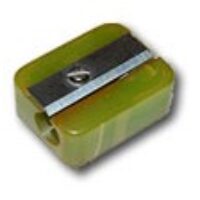Any wise consumer checks the specification of the purchased item in the store, in order to know what he’s getting. Unfortunately, this does not guarantee a happy deal…
One day we decided to go buy a new TV set. We went to the store and selected a top notch Sony, with impressive specs. We took it home, set it up, put the resident teenagers in front of it… and they expressed major discontent!
It’s not that the picture was bad (it was crisp and vibrant), or that the sound was poor (it was excellent), or that the set failed to live up to the impressive specs on the box. The problem was that when you used the remote to channel-surf, instead of the Zap-Zap-Zap of the old TV, this one went Zapppp…… Zapppp……Zappppp… you see, the TV needed a whole second to blank the screen and bring up the next channel, making rapid switching an impossibility. You’d think a second is no big deal, but I had to agree with the kids: it completely obliterated the user experience of the surf.
Now, this is one thing I could never have foreseen. The feature list on the box did not say, “Optimized for a crummy channel surfing experience”; and having never had a TV that needed to think about obeying the remote, I never thought to check this in the store. It was an undocumented feature in the design – an emergent misfeature, if you will – that the buyer would only find out at home.
Here’s another: we have a Sharp microwave oven that has the useful habit of beeping once when the time is up. Cool. It has the slightly less useful feature of beeping again a minute later if you didn’t notice the first beep. Okay. And then it has the maddeningly stupid feature of beeping three times every minute thereafter, never relenting until you give it your attention. Hey, stupid oven, I heard you, but I’m busy right now – keep the food inside and shut up!
Again, this is an undocumented feature – one no salesman would tell and no buyer would ask, but one that delivers a major annoyance once you get the thing home. These examples showcase how the imagination of a bad designer in inventing misfeatures transcends the buyer’s ability to foresee them…
Come on, designers, have a heart!

 of a much stronger, foamy brew; and upon inquiring how they could produce it at home we were shown the Brikka, the machinetta with the “sbuffo” (the dictionary says “gust of wind; puff“, but a fiery snort sounds more appropriate to convey this word’s feel).
of a much stronger, foamy brew; and upon inquiring how they could produce it at home we were shown the Brikka, the machinetta with the “sbuffo” (the dictionary says “gust of wind; puff“, but a fiery snort sounds more appropriate to convey this word’s feel).



